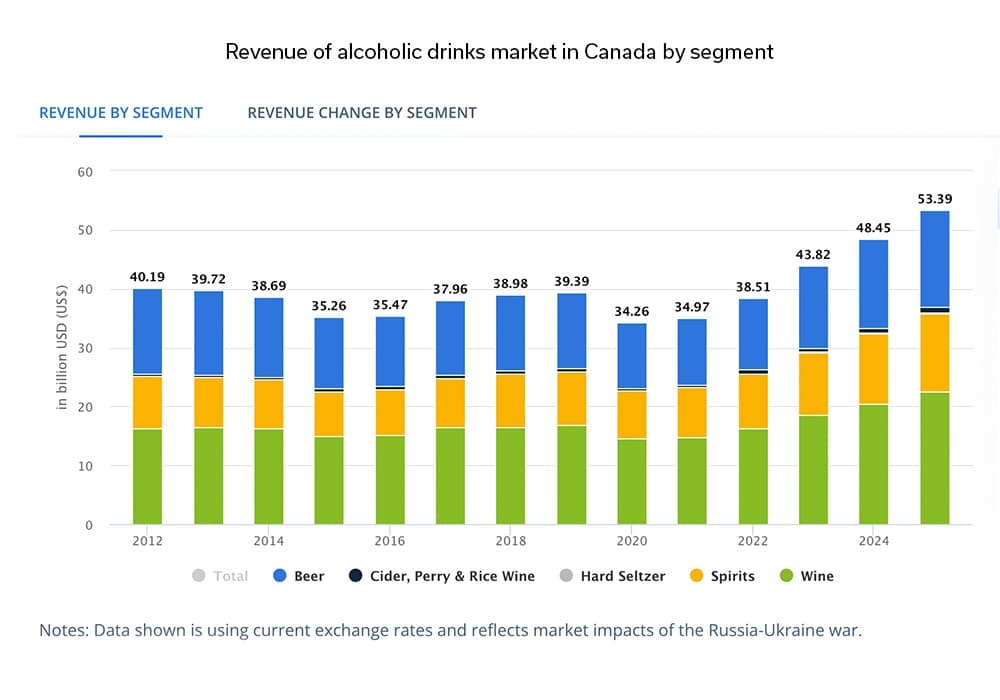A product description supplies a crucial preview of what customers can expect from your product or service. Will it meet their needs? Does it address particular pain points? Will it enrich and improve their quality of life?
Product descriptions can provide all these insights and more. That is if they’re executed correctly.
Several crucial criteria can make or break whether a product page comes across as humdrum and generic or features product descriptions that sell. In this sense, while it may not seem like a vital element to devote time to, these descriptions provide valuable context for potential customers.
They are also a critical means for reaching your target audience, increasing conversion rate, promoting a healthy sales funnel flow, and establishing a sturdy foundation for your eCommerce business.
So, while it may seem like an afterthought for selling your product, a good product description is a pivotal feature that heavily impacts a customers’ purchase decision. It could be the difference between a sale and an abandoned cart or, for you, the difference between driving or losing sales.
Today, we’ll be outlining precisely why great product descriptions are so important, how to write them effectively, and provide helpful tips and tricks using relevant, real-world examples.
We’ll cover:
The Importance of a Great Product Description
A product description is essentially a form of persuasive marketing copy that outlines what a product is and its various features and benefits, with the objective of convincing customers why they should want to buy it.
There is no one uniform method for writing product descriptions. However, there are certain techniques that can substantially impact their efficacy.
A common misconception that many business owners and marketers alike fall victim to is believing that the primary goal of a product description is merely to describe the product. This line of thinking can lead to a crucial mistake when attempting to write product descriptions that sell.
Au contraire! They are actually much more complex and require far more consideration.
What sets a good product description apart from a great one is extending your thought process to encompass the real people you’re selling to.
Going this extra mile is one of the most crucial strategies to set your product description apart from one that merely provides a run-down of the product for search engines and one that establishes a legitimate connection and serves as a valuable resource for potential customers.
Particularly in the context of an eCommerce website, you don’t necessarily have the luxury of engaging with customers on an in-person basis.
Instead, you rely much more heavily on tools such as practical yet engaging product descriptions to not only outline product features and benefits but also to convey your unique selling proposition and brand philosophy to your target audience.
In fact, according to a study from the American computer user interface and user experience consulting firm, Nielsen Norman Group, 20% of purchase failures are potentially due to missing or unclear product descriptions.
This isn’t to say that writing product descriptions is an easy task. As we said, there are a lot of criteria to consider. If you’re intimidated, don’t be! In the following section, we’ll outline the fundamental basics of how to write effective product descriptions.
5 Techniques to Use for Product Copy that Sells
As we said, there’s no one specific product description template to ensure success. However, certain characteristics distinguish more compelling product pages from those that are clearly written as a means to an end.
Below, we will expand on five crucial tips for how to write product descriptions that will entice and engage customers.
1. Focus on Your Ideal Target Audience

When writing your product description, one of the most effective approaches is to be specific.
If your description is too broad and caters to too general an audience, it ends up coming across as generic and irresolute. In this context, being too inclusive could actually produce an adverse effect.
In other words, by trying to address too broad of an audience, you aren’t genuinely connecting with or reaching anyone.
The objective is to present your product or service as the answer or solution to your customers’ questions or concerns. The best product descriptions address your target audience directly. So, you want to make your language approachable and similar to what your target audience would use.
For example, using the word, you, is a common approach to this strategy that provides empathy and a sense of commonality with the consumer. It’s about imagining your ideal buyer and putting yourself in their shoes.
What’s their personality? What type of humour do they find funny? What words don’t they like? What questions do they want the answers to?
A practical tip for this scenario would be to picture what you would say if you were trying to sell the product or service to a customer in person, face-to-face. From there, try and integrate that language or approach into your eCommerce website to create a more authentic digital dialogue.
For example, the music festival Coachella incorporates this mentality into their product descriptions for their merch. Take the above image. They are essentially selling a plain black t-shirt. However, it’s how they phrase their product description that caters to their specific clientele.
It uses language like “must-have that complements your band tee collection” to establish a connection with the customer based on a mutual affection for music and the desire to collect souvenirs to remember concerts past.
It plays on the nostalgia factor in a relatable yet straightforward way.
2. Highlight Benefits as a Solution

When you’re at the helm of a business, it’s only natural to become caught up in your product’s various cool and intricate features. While some may find the magic in the details, your customers are focused on how it benefits them and why they should buy it.
They aren’t as captivated or actively invested in the mundane features. They want to see what this product can do for them and how it’ll address their particular needs.
In this way, it’s crucial to highlight your product’s benefits and key features from the get-go by plainly outlining them in the product description.
These insights will require a bit of research on your target audience to determine the specific pain points or concerns you want to address. It also requires a bit of creative writing to make it sound enticing!
Be sure to use positive language while remaining concise and to the point. There’s a fine line between features and fluff!
Multinational French retailer of personal care and beauty products, Sephora, does this beautifully.
As you can see in the description of the company’s Sephora Collection Ultra Glow Serum, the product description features specific highlights where the consumer can see precisely and concisely which target areas and needs this product helps.
The ‘About the Product’ section delves further into the details surrounding what it is, which skin types and concerns it helps with, and key ingredients. This information provides the customer with the necessary insights relating to finding the ideal benefits that would serve as the most effective solution for their particular needs.
3. Make it Straightforward & Easy to Read

For the most part, customers don’t want to read a novel when learning about or trying to understand a particular product. Short and sweet is key! A common method for avoiding a lengthy product description is by using bullet points.
Bullet points are a practical and efficient way to highlight a product’s essential features, present the necessary and most pertinent information for the customer, and convey its intended purpose without bombarding them with unnecessary fluff.
Most of the time, users will skip most of the description and simply skim the bullet points to get the gist of whether or not the product meets their needs. So, why not make it more accessible?
Canadian co-op company Mountain Equipment Co-Op is an excellent example of this approach.
On the product page for one of their sleeping bags, customers can easily see the necessary information to determine whether it will work for their specific hiking or camping adventure(s).
Not only does the product description highlight key features, such as draft tube blocks and Pertex Quantum nylon lining, but it also uses the more casual “you” and “your” language to create a connection with the consumer.
4. Tell a Story

Everyone loves a good story! Sharing stories is part of what makes us human. This mutual experience can also be a practical and powerful marketing tool, especially when writing an effective product description.
Creating a story in your product description is a discreet and understated way to show that you put the customer and their experience first.
Ultimately, customers purchase products to enhance or enrich their lives. If it can extend to other areas of their interests, that’s an added bonus!
The best way to approach this story-telling strategy is to put yourself in the customer’s shoes. What would best ignite their imagination? How can your product best support that story? What are the buyer’s underlying emotional and psychological drivers for purchasing this product? How could that story potentially feature your product?
Like writing any good story, incorporating these features into your product description starts with the drafting phase!
American retailer catering to computer enthusiasts and “geek culture,” ThinkGeek, does this exceptionally well. For instance, consider their Star Wars Alliance Special Forces Rucksack. To some, it may look like an ordinary backpack, but to fans, it’s a piece of usable memorabilia.
Instead of just focusing on how it looks like a prop from the franchise, the product description takes things a step further by telling a story.
The language makes the customer imagine that they’re actually in Star Wars before even buying the product. With playful language like eluding to the bag fitting “your Ewok BFF,” it creates a link between the business, the consumer and their favourite franchise that brings the product to life.
Does it describe an actual feature of the bag? No. However, it contributes to the overall experience of the item that consumers can connect with on a nostalgic level.
5. Avoid Unnecessary Language

We’ve highlighted it multiple times, but it bears repeating. Product descriptions don’t need to be wordy or extensively long to be compelling and effective. If you’re stuck trying to find the right words or don’t know what else to add, it’s time to stop writing.
Adding more than what’s needed can actually serve to undercut the intentions and objectives of your product description by adding unnecessary, generic language.
As we said before, there’s a fine line between features and fluff!
For instance, conventional phrases like “excellent product quality” can work against rather than for you.
When a customer reads something like that, they’ll likely think to themselves, “well, yeah, sure, that’s what they all say.” After all, if the objective is to sell, no business owner in their right mind would describe their product as “so-so” or “mediocre.”
All this is to say that you tend to become less persuasive when you use such generic, predictable phrases that make consumers think of you as just another business trying to make a buck.
To prevent this reaction, it’s crucial to be specific in your product description about how your product, specifically, is superior and cut out any unnecessary filler language.
For example, when marketing their Air Max Alpha Trainer 4 shoes, American footwear manufacturer Nike doesn’t simply describe the product as being of “excellent quality.” Instead, it explains the technical details of the specific model plus their benefits without mentioning the quality at all.
However, highlighting the various key features describes the product’s quality indirectly. It adheres to an easy-to-follow structure that defines an element and expands on how that specific characteristic benefits the product’s overall performance.
This approach to product descriptions is much more effective because it provides the necessary insight while remaining to the point and efficiently highlighting how these features could address consumers’ particular needs.
Key Takeaways
Product descriptions are so much more than merely describing various product features. They are a window into how a particular item could benefit and enrich a customer’s life.
In this way, selecting the proper words, perspectives and approach could set your brand apart from the countless others who don’t put as much time or effort into creating captivating and convincing product descriptions.
Ultimately, these descriptions serve as a valuable marketing tool to generate a more meaningful relationship with consumers by featuring a more authentic human element.
Going the extra mile to incorporate a sense of relatability and approachability can be an incredibly effective method not only brand advocacy initiatives, as well.
Who knows. It could convert a one-time sale into loyal, returning customers!




